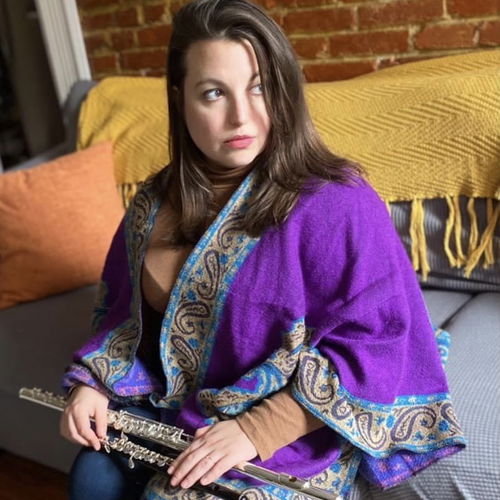A glimpse into the sonorous piccolo
Details
Tara Rozanski full profile / Flute, piccolo and piano / 1 musician
Full program notes
The piccolo is known traditionally to soar through orchestras, to be shrill, and to be loud in general. Although its invention was exactly supposed to do that, throughout the years specialists on the instrument like myself have explored and expanded the range of the piccolo more to lean towards a solo ininstrument, instead of keeping it in the box of being a loud shrieking stick!
JS Bach - Partita in A minor for solo flute
This Partita consists of 4 movements originally for solo flute. Scholars do wonder if each movement was written by JS Bach.
JS Bach Cello Suite No. 1 in G major: Prelude
A piece not often heard on flute or piccolo, this Prelude fits beautifully on both instruments
Marin Marais: Les Folies d’Espagne
Seventeenth-century virtuoso viola de gamba player, Marin Marais, composed and
performed in the French royal court from 1679 until 1725. His position of “viol player in
ordinary of the King’s Chamber Music” oversaw the rule of both King Louis the XIV and Louis XV at the height of French Baroque music. The piece consists of a main theme and variations, illuminating the virtuosity of any instrumentalist.
Debussy- Syrinx (performed on flute)
Composed in 1913, Claude Debussy's Syrinx is based on the Greek myth of Pan and Syrinx. In the myth, Pan is a god who pursues the nymph Syrinx, who turns herself into reeds to escape him. Pan then cuts the reeds to make his pan pipes. The piece is one of the most iconic and frequently played solo pieces for flute and it said to represent the emotions of Pan, not a literal retelling of the story.
Amanda Harberg - Hall of Ghosts
From the composer: “ Hall of Ghosts was composed in 2020 during the Covid-19 lockdown period; it was inspired by piccoloist Gudrun Hinze's video for Harberg's Prayer Project filmed in the hauntingly empty Gewandhaus Chamber Music Hall. Evocative of imagined spirits in the empty hall, the music pits dramatic silences, amid searching and plaintive phrases of the piccolo, against a lively middle section – a dialogue between the ticking of time and an instrument striving to make itself heard.”
Historical context
My inspiration for this program was to go through specific periods of music bringing attention to important repertoire for flute, piccolo, and other instruments. I have placed the order of the program from earliest pieces to the most recent. The Baroque era was known as the golden age for flute, and with its evolution among the years and a new added family member, the Piccolo, I am inspired to represent more traditional music, and the last piece more current but certainly still appealing to the ear. This program is widely varied.
Videos from this player

 Continue with Facebook
Continue with Facebook
 Continue with Google
Continue with Google
 Continue with Apple
Continue with Apple



